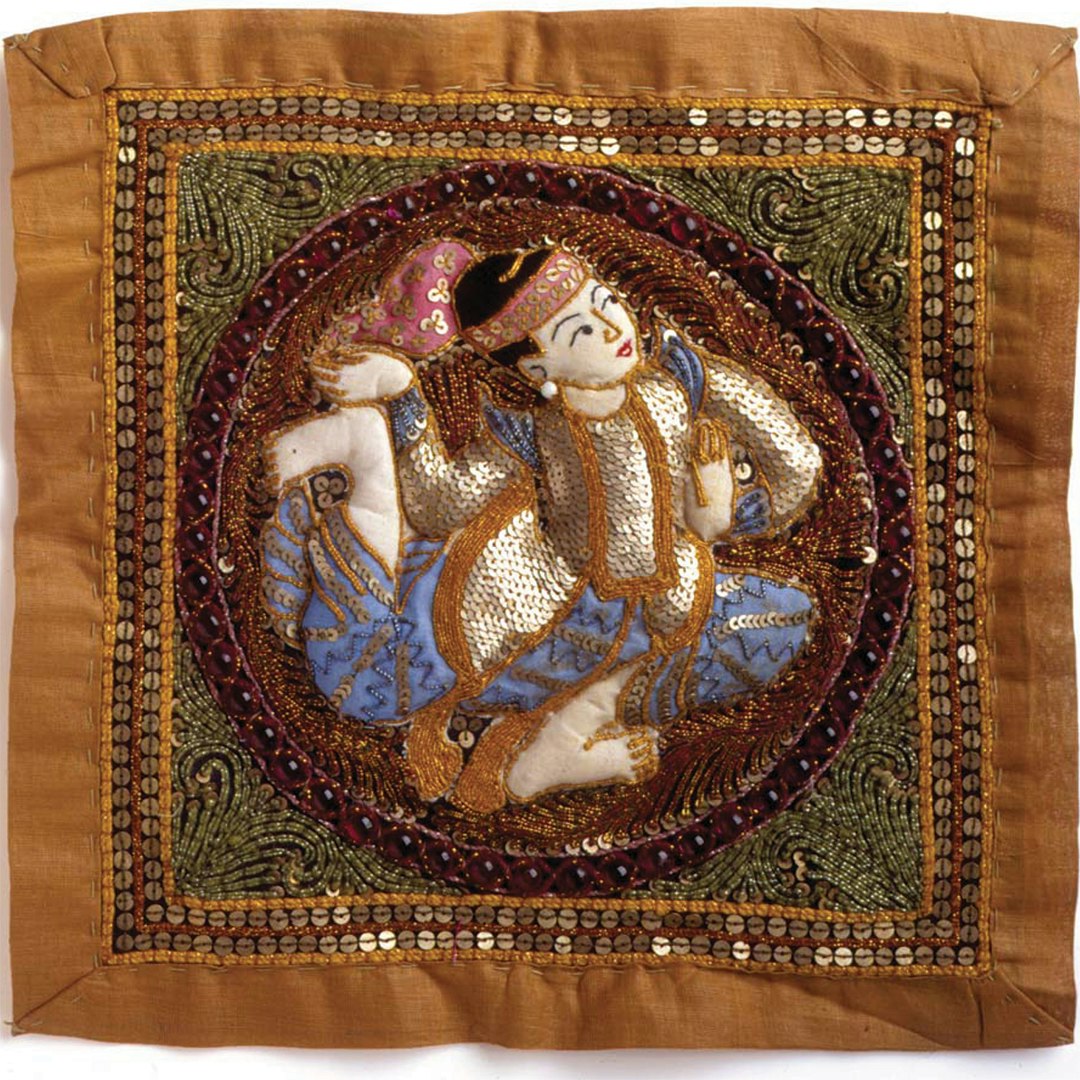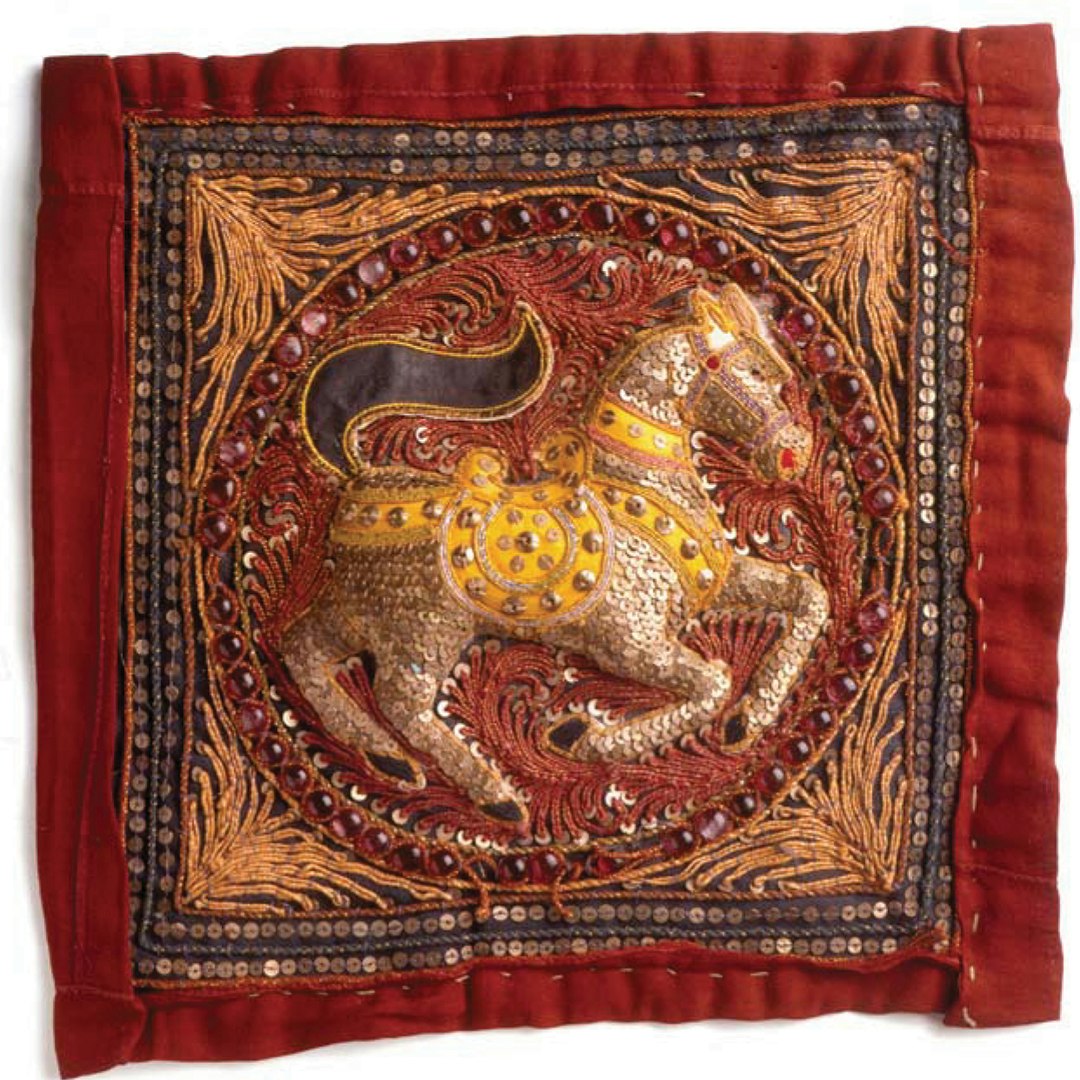The only light inside the room filters through slits in the woven bamboo walls. A man hunches over a curious handmade apparatus, wrapping copper wire around a rod to form a small, tight spring. He methodically turns, coils, and cuts off centimeter-long segments of the spring, giving them to several little boys seated on the floor, each before a piece of tree trunk that serves as a low worktable. A boy places a spring on a metal plate, covers it with a smaller metal template, and begins to pound with a hammer. Copper is soft and easily worked; after a minute or so of pounding, the flattened spring is transformed into a flat disk with a small central hole—a sequin! Cup-shaped sequins are formed using a cup-shaped template. The copper sequins are strung on cord, then taken behind the cottage, where the electroplating solution and auto battery are kept, and coated with a silver-nickel mixture.
 Gold-thread and sequin tapestry, called a kalaga, of a Buddha figure, made in Myanmar (formerly Burma)
Gold-thread and sequin tapestry, called a kalaga, of a Buddha figure, made in Myanmar (formerly Burma)
My husband and I saw the sequins being made in 1987 in a small village near Mandalay in Myanmar (the name of the country changed from Burma in 1989), where we were vacationing, following a business trip to Southeast Asia. I was interested in the traditional beaded, embroidered, and sequined ceremonial tapestries called kalagas (a Sanskrit term for Indian wall hangings), and we had begun our tour of their manufacture by watching the sequin makers.
Early tapestries were used as screens or wall hangings in religious buildings, as coffin covers at monks’ funerals, as doorway covers, and as oxcart decorations. Adherents of Buddhism perform merit deeds; one such act is to commission and donate a tapestry to a Buddhist temple or monastery. Contemporary kalagas may even depict modern-day secular scenes.
 Gold-thread and sequin tapestry, called a kalaga, made in Myanmar (formerly Burma) with a central figure of a horse
Gold-thread and sequin tapestry, called a kalaga, made in Myanmar (formerly Burma) with a central figure of a horse
Making the embroidered and appliquéd kalagas is a cottage industry that involves many villages, each of which specializes in producing a certain craft in factories that are family homes, cottages woven of bamboo. Simple furnishings and hammocks are pulled out of the way to provide as much working space as possible for the family members and neighbors involved in the craft work.
Interested in learning about textiles in other cultures? This article, a companion project, and more can be found in the March/April 2017 issue of PieceWork.
Also, remember that if you are an active subscriber to PieceWork magazine, you have unlimited access to previous issues, including March/April 2017. See our help center for the step-by-step process on how to access them.
Sara Drower has a background in biology and scientific illustration. She is a textile artist who makes quilted and embroidered jackets and wall hangings and lives in Wilmette, Illinois.
Originally published October 17, 2017; updated June 28, 2023.

